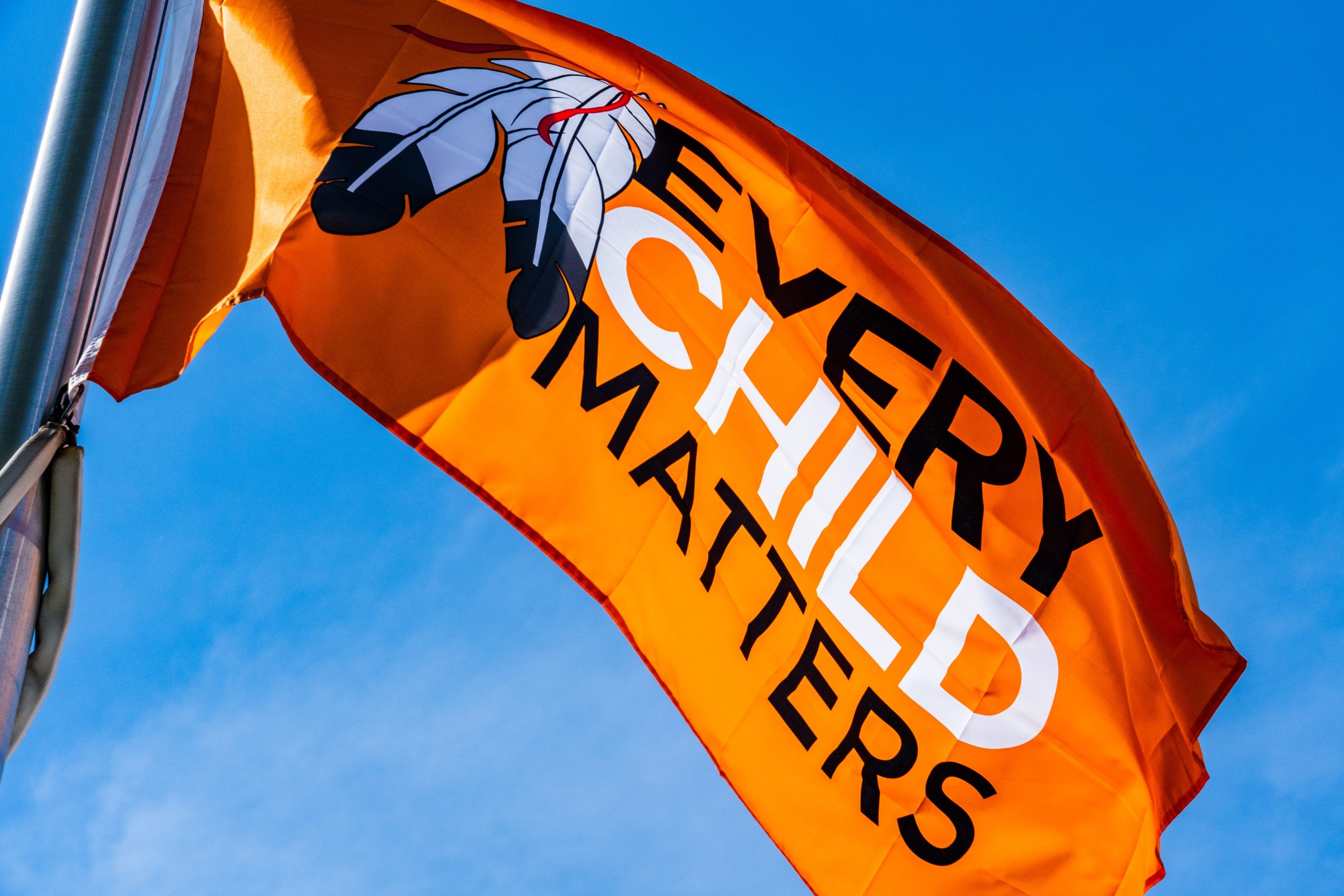2021 has been an awakening year for many, in regards to learning the depth of the traumas Indigenous peoples of Turtle Island have faced and continue to face today. In May, 215 unmarked graves were discovered at a former residential school on the grounds of Tk’emplúps te Secwépemc First Nations people in Kamloops, British Columbia. Since then the number has only risen, and it is now believed that there are more than 5000 unmarked graves on the sites of former residential schools across Canada. This news shook the country to its core and hit headlines across the globe. As a result, it has been sparking more discussion and reflection about the best methods to achieve meaningful reconciliation.
Following these discoveries, more actions have been done to aid in the efforts towards truth and reconciliation. One way the Canadian government has recently attempted to do this is through the implementation of the federal holiday for National Day for Truth and Reconciliation. September 30th, 2021 marked the first National Day for Truth and Reconciliation which coincides with Orange Shirt Day, a day designated for recognizing residential school survivors and remembering those who did not survive it. This new addition of a federal statutory holiday means that federal offices, banks, post offices, and schools will be closed on September 30th but private businesses can decide whether to stay open or not. However, some provinces have decided not to recognize September 30th as a statutory holiday. Whether intentional or not, this decision may be more appropriate considering some criticisms that have been made of the holiday.
One issue is whether the implementation of a statutory holiday is truly benefitting the right people. Only 5.1% of Canadian public service jobs are held by Indigenous employees. Thus, only a small percentage of the Indigenous population would be guaranteed the day off, as any Indigenous people working for private businesses may be required to work. Yet, people who do not identify as Indigenous make up the majority of the federal public service jobs and would still receive a paid day off. Looking at these statistics, it seems that the holiday is not benefitting Indigenous people, as many of them may need to work on this holiday even though it is designed as a commemoration day of grieving and mourning.
Another consequence of the holiday that has been overlooked is giving children the day off school. As with any other statutory holiday in Canada, schools will shut down if the National Day for Truth and Reconciliation is being recognized as a statutory holiday in that province. This may pose a problem because children are unlikely to take the initiative themselves to reflect and learn about the horrors of residential schools. However, when in school, teachers will be able to encourage it. In a home setting, the onus would also be put on the parents or guardians to educate children. This is a large issue for many reasons; firstly, some parents may hold anti-Indigenous sentiments, in which case they will not be enabled to have discussions with their children on these subjects. Secondly, many parents are not educated enough themselves or feel comfortable to then educate their children about these difficult subjects. Lastly, parents themselves may be required to work on this day which would result in children being babysat— in which case it is unlikely any form of education in relation to Indigenous people would take place. As a result, if no education or reflection occurs, children may view this day as any other holiday where they get the day off school and view the day as something to look forward to, not as a day of commemoration. Instead, if children were in school they could be in the proper environment to learn about Canada’s dark history with the proper resources to effectively do so.
That being said, the National Day of Truth and Reconciliation should not be completely discarded: instead, reformative suggestions can supplement the existing holiday. One idea that can be put forward is to treat National Day for Truth and Reconciliation similarly to Remembrance Day. Ontario is one of the provinces that has taken this step after deciding not to recognize the day as a statutory holiday. By treating it in a similar manner to Remembrance Day, children are in schools where they can have meaningful discussions, resources, and assemblies provided to them. This also does not privilege non-minorities by allowing them to have the day off while many Indigenous people continue to have to work. Offering only those who identify as Indigenous to take a paid day off is also another option that would be appropriate considering how emotionally taxing and triggering this day can be. There are more suggestions to be offered in reforming the National Day of Truth and Reconciliation. For example, designating a specific time to hold a moment of silence, encouraging the uplifting of Indigenous voices on all platforms, and providing memorial services throughout the day for employees and citizens to attend.
Overall, efforts to improve truth and reconciliation are evident with the implementation of National Day for Truth and Reconciliation, however, there are some overlooked problems that we must address in adopting it as a statutory holiday. Both the issue of benefiting the wrong population and the negative impacts of taking children out of school and out of reach of valuable resources are reasons to revisit this implementation. More focus should be put on improved and increased beneficial ways to work on reconciliation, show support, and acknowledge the grievances of the Indigenous populations in Canada.
Edited by: Olivia Shan
Hi I’m Jenna Hicks. I am a third year student studying International Development with a minor in Political Science at McGill University. I have a strong interest in human rights issues as well as feminst related topics and I look forward to being able to share these interests with the Catalyst audience.

